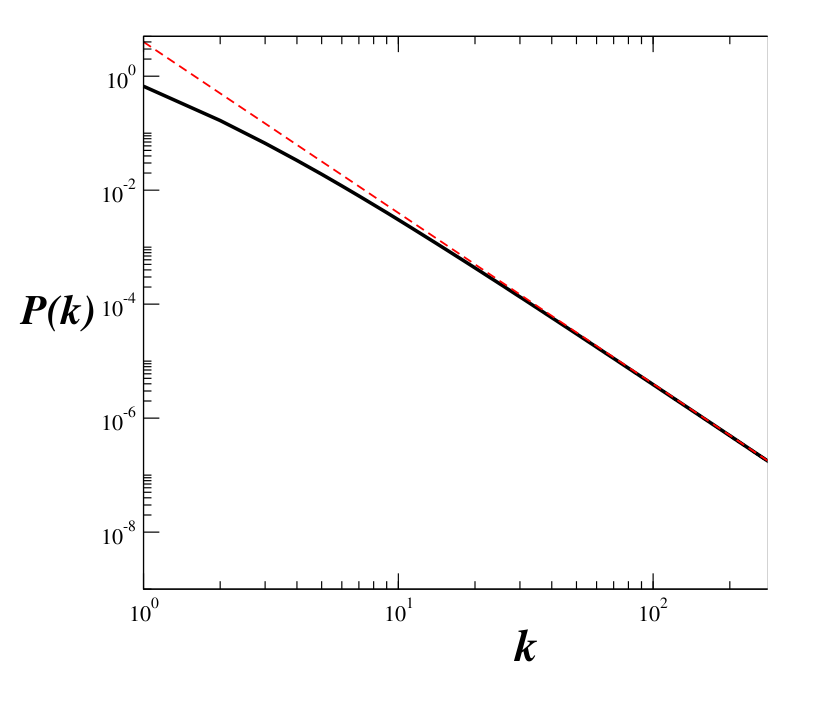Exponential network
For the case in wich any of the existing node can be selected with the same probability to be connected with the new added node, the probability
in independent of
and is given by the following expression
Where is the nodes total number at time
. After long enough time the function
reaches a steady state in which
. In that steady state the solution for the time evolution is
which is the exponential distribution. It is important to mention that this distribution emerges in the context of networks growth as a result of having equal probability of any existing node of being selected to form a new connection, with the recently added node.
Free-scale topology
In many networks in real life, connections are not formed based on equivalent probabiliies of being selected. For this reason, Barabasi introduced the concept of preferential attachment, in which the new nodes are added to the network with some bias. Networks following this principle present, few hubs that have lots of connections, while anyother else only has few.
Barabasi suggested that the probability of connection should take the following form:
where is the n-th node connectivity existing at time
. The factor before
is just to guarantee that the probability
is normalized. With this expression, the behaviour is as follows: the larger the connectivity, the larger the probability of form a connection with it.
Due to the fact that nodes are added in each time step, if we start with zero conecctions at time
then for any time
we have
and furthermore,

Log-Log plot of connections distribution for free-scale topology The red dashed line is a power law plot , we should note that
for high values of